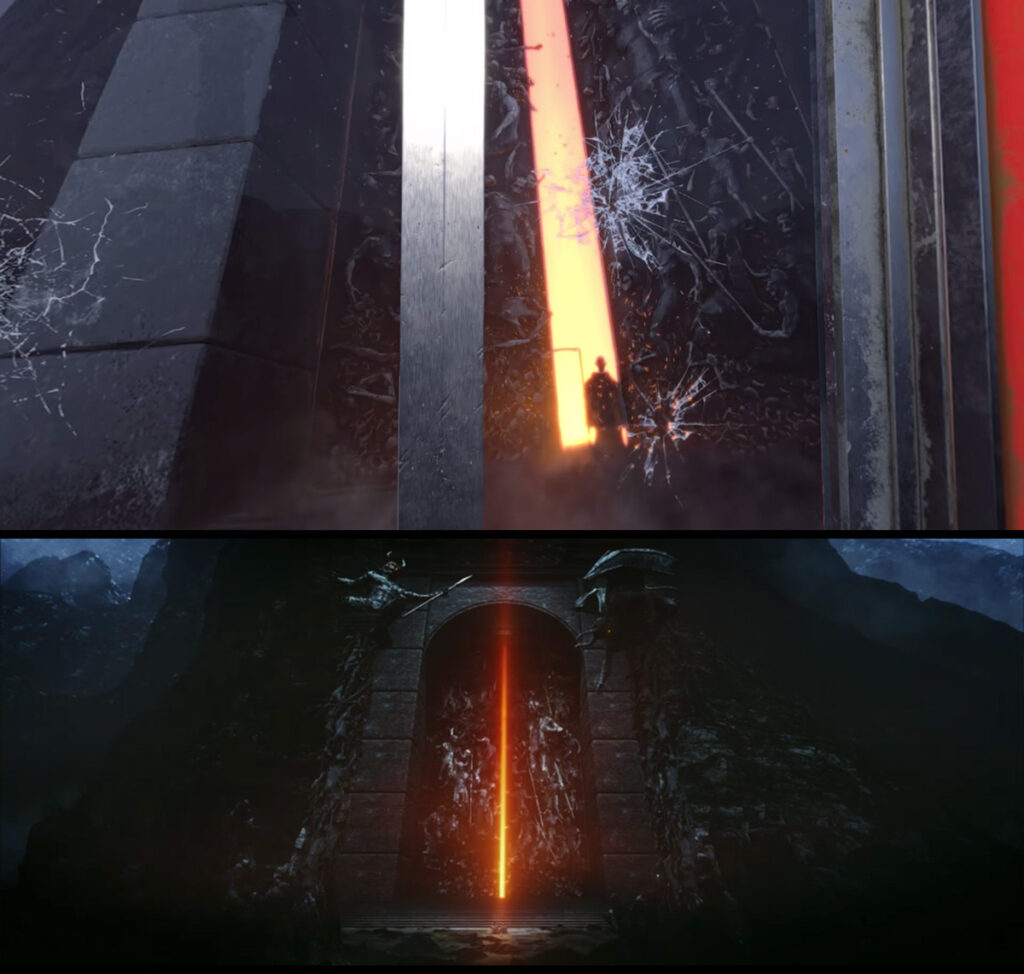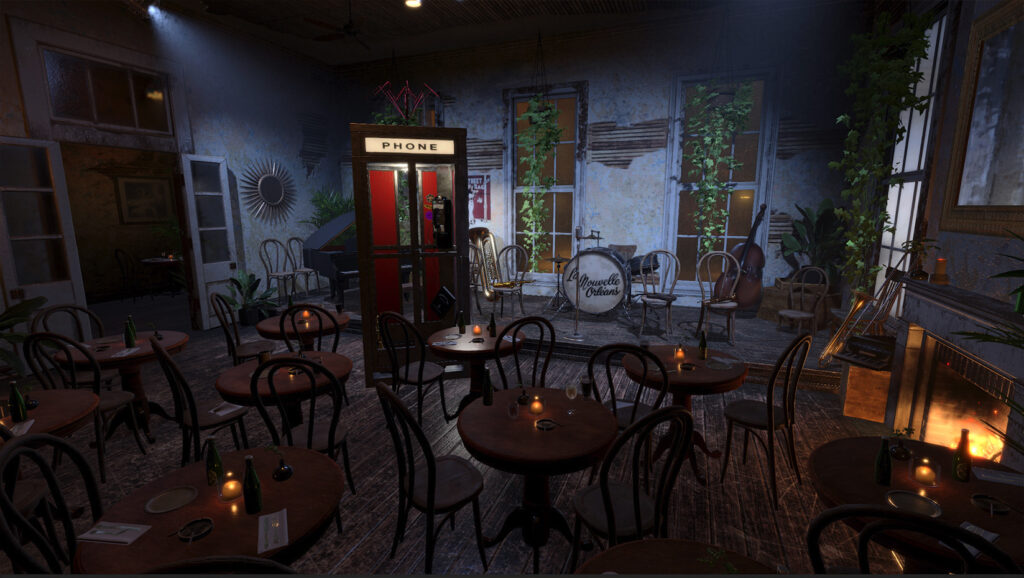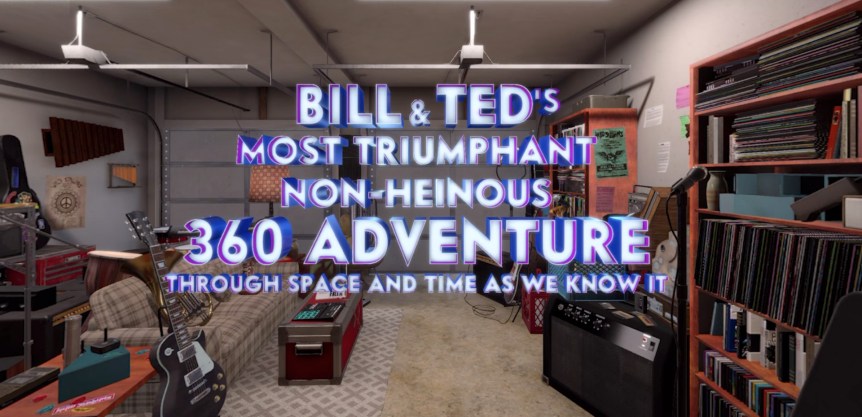The release of Bill & Ted’s Most Triumphant, Non-Heinous 360 Adventure Through Space and Time As We Know It just weeks before the much anticipated franchise sequel Bill and Ted Face the Music, was a delightful and well-received surprise. The 360° short film, developed in collaboration with Pixel Dash Studios and Top Right Corner Production, is best enjoyed in virtual reality and takes the watcher on a trip through, well, space and time as we know it from the perspective of the most excellent duo in history, Bill and Ted and features several TurboSquid models along the way.
We had the opportunity to discuss the project with Pixel Dash Studios’ James Beegle, the Senior 3D Artist on the project.
James, can you give us a quick review of the project? I want to make sure I get the name right.
Sure, the project is titled Bill & Ted’s Most Triumphant, Non-Heinous 360° Adventure Through Space and Time As We Know It— longest title in the world. It was a VR experience trailer for the movie Bill and Ted Face the Music which released this past summer. The trailer came out in August, about a week or two weeks before the movie came out. Once we were greenlit to begin work, it was about a two-month project, so we used a lot of stock assets for the art content. We primarily used stock assets for those. A small margin of models were done by hand. Those were primarily unique props.
What was your role on the project?
I was the Senior 3D artist on the project. I was in a lead role as we pulled in some folks, some of whom I’ve worked with before at other studios. So I got to go through all the environments to monitor progress. I also handled three of the environments myself: the garage, Hell, and the elements for the Circuits of Time. Mainly my role was to design the environments. I started out by blocking out the walls and the ceiling, and once that was established with good lighting, we needed to fill the spaces with stock assets. We had reference photos from the movie, so the goal was to match those reference photos as closely as possible. As a big Bill and Ted fan, it was pretty exciting to be one of the first people to see those images
You worked off of reference photos from the films?
Yes! The production company we worked with provided the reference photos as well as some of the more organic stuff like high-poly CG movie props. So the Hell scene was very organic. The rock formations had to look exactly like the movie, so they were kind enough to provide assets for stuff like that. I decimated that down to make it work for a playthrough on Unity.

Bottom: A still from Bill & Ted Face the Music
So you’re essentially building film sets in the Unity Game engine? I don’t think I’ve heard of someone using it that way before.
The company has worked on projects similar to this one before. They previously made the VR experience to accompany the Child’s Play movie revival a couple of years ago. Primarily though, we are a video game studio, and the Bill and Ted trailer is actually a VR video. It’s kind of like taking a 360 camera in the real-world, but instead the 360° camera is placed inside the game engine and you pretty much record from there and get a good, high-quality render. When you use the engine like this, you’re not actually calculating art assets or having a lighting budget or texture resolution size, practices that are common for making playable video games in a game engine. Because we didn’t have to worry about optimizing for gameplay for this project, we were able to crank things up pretty high for this to make it look as polished as possible because the final render was ultimately a recording. Now, the final render was definitely still making the machines pretty warm. There was a point when the computer fans were definitely eating up all the atmosphere in the room, but everything worked out really well in the end.

Bottom: A still from Bill & Ted Face the Music
Indeed it did! You mentioned that the Hell scene was pretty much a recreation from the movie, but that opening Garage scene was full of stuff I wouldn’t necessarily consider hero pieces. Is that where the stock assets came in?
Yes, I pretty much designed wall-to-wall-to-ceiling the garage. We had this whole inside space and then the garage door opens and you see this whole sweeping neighborhood beyond your immediate space. So we’re talking about two big environments in one scene, which was a little bit of a challenge. Stock assets really saved our bacon when it came to filling these large spaces with a lot in such a short amount of time.
When looking for stock assets to use in that situation, what are you looking for?
Well, since we were working with a property with a really attentive fanbase, we needed to make sure that we were using props that were accurate. We wanted fans of the franchise to recognize specific props and that means we had to find the exact styles and types of, for example, musical instruments. Real fans can look at a scene and tell whether the space is correct or incorrect. Luckily, I’m one of those fans, so I was able to go in there and know exactly what we were looking for by sight.

Bottom: A still from Bill & Ted Face the Music
It sounds like maybe combining those two environments was a bit more complex than you’re letting on. How was it making those two environments work together?
It was somewhat difficult. We built the experience in the Unity game engine. Normally in Unity I would start with the larger environment first and drop the smaller into that, but I didn’t know right off the bat what kind of environment we were going to have for the outdoor space. We started a little backward and had the garage space ready to go first, and then I got the neighborhood environment that had to be incorporated on top of the garage space. Luckily we had relatively precise measurements. I think there was maybe an inch or two of adjustments that needed to be made, but all-in-all it worked out pretty well. We actually had a first look on that scene ready in just a couple of days with a large number of the stock assets already included. I like to try to get a first look as quick as we can because it gets everyone motivated and on the same page.

Speaking of the team, this was all developed during the COVID-19 pandemic, correct?
Yes, this was all developed completely remotely with the Pixel Dash team. We were all working from home on our computers while collaborating on this project. Honestly, It was a lot of fun coordinating on this project. We had several outsourced artists come to collaborate on the project. It was fun leading a larger team working together to push for quality work.
Is that different from other VR projects that you’ve worked on?
Oh, yeah. Most the projects I’ve worked on in the past have been collaborative in-office work. I started working with Pixel Dash only a month or two after COVID-19 hit the states, so my time with this company has been all remote. The team does a great job of having a good, working repository where everyone can check in their stuff throughout the day. We can all tell when or if there are conflicts or other people working on the same tasks.
Any tips for readers who are also working-from-home on how to keep things fun while working with a team remotely?
Slack helps a lot with that. We have a general chat channel for kicking it around the digital water cooler. Working from home means I can also play music as loudly as I want, or even put on a movie in the background to break up the solitude. I’m pretty used to “doing it all,” so it has been really nice to work with a team of people who are also used to and capable of “doing it all.”
James Beegle is a Senior Digital Artist with over 10 years of experience, primarily in video game and virtual reality development. He has excelled in companies that range from independent to triple-A, and has collaborated to create software for all major game consoles, PC, and mobile devices. James strongly believes that the key to producing a high-quality product is the intersection of good communication, pipeline, and focus. See more of Jame’s work on his portfolio site.
If you’re interested in being featured in our customer spotlights, you can email our content team at marketing@turbosquid.com.

